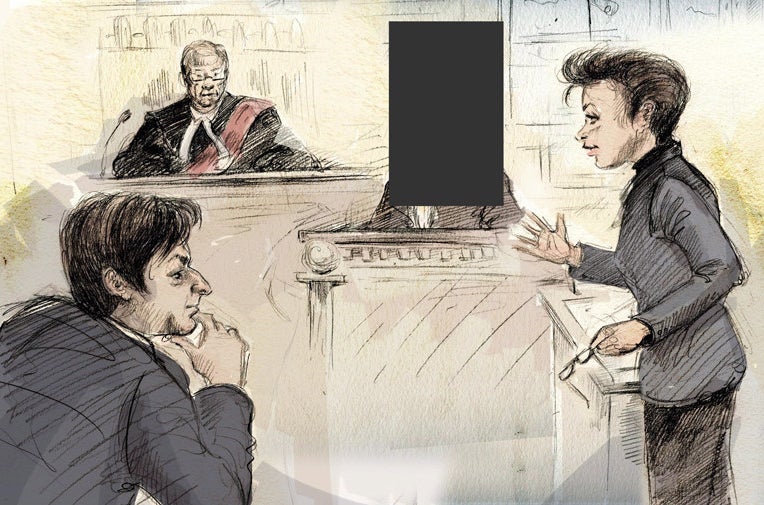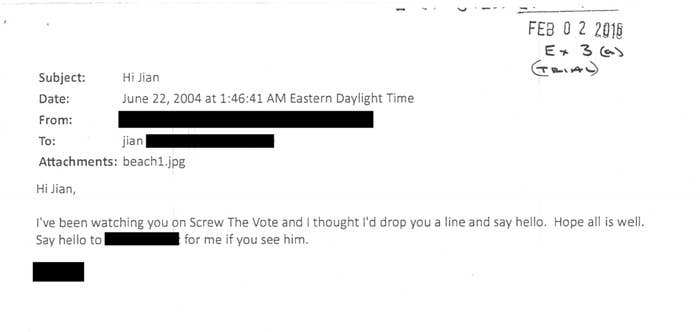The first witness in the Jian Ghomeshi sexual assault trial is “very concerned” that courtroom sketches published by media outlets may have exposed her identity, her lawyer says.


The witness cannot be identified due to a publication ban. At issue are two Canadian Press sketches that were widely published.
"She’s very concerned about her identity being kept secret," Jacob Jesin, her lawyer, told BuzzFeed Canada. "From her perspective, even the sketches could potentially lead to her identification."
Jesin said the sketches went too far by depicting hair colour, hair style, and her side profile. "It’s a very unique hairstyle."
Section 486.4 (1) of the criminal code states that in the case of a publication ban "any information that could identify the victim or a witness shall not be published."
Alexandra Newbould, the Canadian Press courtroom artist who drew the sketches, told BuzzFeed Canada the hairstyle depicted in her drawings is common, and that many women with blonde hair wear it pulled back. She also said the facial features she drew of the witness from profile were not specific to the witness.
(BuzzFeed Canada has concealed the witness' face to avoid any inadvertent identification.)
The issue of her identity was also before the court today when Judge William Horkins ruled against a request from the Toronto Star, CBC, CTV, Global, and Postmedia to unseal a photo the witness emailed to Ghomeshi in 2004. It showed her in a bikini.

Jesin said he was happy with the judge's ruling. His co-counsel, Alvin J. Shidlowski, had argued in court that if the image was published, even with part or all of the witness obscured, it could be used to identify her via a Google Image Search.
Lawyer arguing is Alvin Shidlowski. Witness's friends have seen this photo, it was on Facebook page. #Ghomeshi
Concerned about reverse image Google search. Lets you input image & search similar, even if obscured. #Ghomeshi Image online, on FB.
Shidlowski said publication of the photo could also easily reveal its location. If that information were to become public, he said, it would open up the witness to other potential angles of identification.
Jesse Brown, the publisher of Canadaland who was one of two journalists who broke the Ghomeshi story for the Toronto Star, criticized the paper for trying to publish the photo.
Is @TorontoStar actually about to fight in court for permission to publish a bikini photo of their own confidential source? #Ghomeshi
This woman trusted @TorontoStar to tell her story of abuse & protect her identity. Star's now fighting to publish her bikini pic. #Ghomeshi
BuzzFeed Canada asked Kevin Donovan, the Star reporter who broke the Ghomeshi story with Brown, to comment on the paper's desire to publish the photo. He referred inquiries to editor-in-chief Michael Cooke. We will update with any response from Cooke.
UPDATE
Michael Cooke provided the following statement:
As the counsel for the media told the judge, if the photo were to be unsealed and then if it were to be published, it would have been blurred to ensure there would have been no chance of the witness being identified.
The Star and other media, including CBC, CTV, Global and Post Media, joined to pursue an important principle of an open court and open justice in seeking access to evidence ... in this case the physical evidence of a bombshell revelation. This photograph is an important piece of evidence that the judge will use to assess the witness’s credibility. As such, there is a strong public interest in the public seeing what the judge has seen.
Any time we let a court stifle that principle there’s a risk it gets used against the media some other time. Having access to the exhibit and publishing it are two different things. If the court had released the exhibit, that would have been the time for the media to decide to publish or not – the media can't make that decision without the exhibit.
The judge listened to the media’s argument, made a thoughtful decision, and we respect it.
